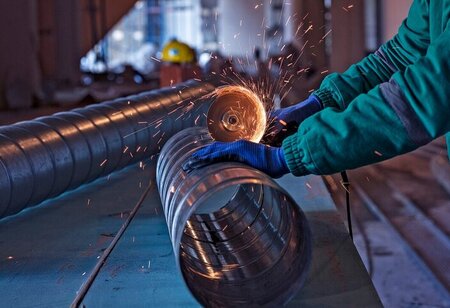
The manufacturing sector rebounded in February, as seen by the Purchasing Managers' Index (PMI), which increased to 56.9 due to increased output and improved sales. Production increased at its quickest rate in five months during the month, which contributed to the fastest sales growth since September of last year and the largest increase in new export orders in twenty-one months.
But the work environment was boring. Halfway through the last fiscal quarter, manufacturing employment in India barely changed, despite the acceleration in economic pace. According to the PMI study, "goods producers stated that payroll numbers were adequate for current requirements." The comments of 400 organizations' buying managers served as the foundation for the preparation of this index. A figure greater than 50 indicates growth, whilst a figure less than 50 indicates contraction.
A day after the government's Statistics Office made the growth data for the October–December quarter of FY24 public, the most recent PMI was made available. It revealed that the GDP increased by 8.4%, with manufacturing leading the way with a double-digit growth rate of 11.6% during the quarter in question. Manufacturing is thought to be the largest employment multiplier, accounting for approximately 15% of gross value added.
Production levels were increased in parallel with a further sharp rise in new order inflows, improved technology, and favorable market circumstances, as the report made clear. The capital goods sector led the manufacturing production recovery, which was the largest in five months. In a similar vein, manufacturing orders grew faster than they had in September and faster than the long-term series average. Businesses said that their marketing initiatives were still successful, in part because of the favorable demand environment.
According to anecdotal evidence, demand growth was observed in Australia, Bangladesh, Brazil, Canada, mainland China, Europe, Indonesia, the United States, and the United Arab Emirates. Notably, new export orders increased at the quickest rate in over two years.
Ines Lam, an HSBC economist, examined the general trend and reported that output growth was still robust, bolstered by both internal and foreign demand. The margins of manufacturing companies increased as the inflation of input prices dropped to its lowest level since July 2020. Owing to strong demand and rising profit margins, manufacturers are confident about the state of the industry going forward, the spokesperson stated.

